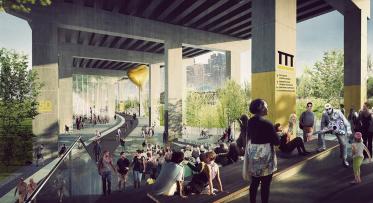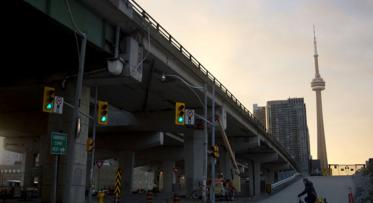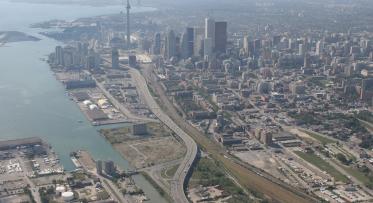Myth: Removing the Gardiner East will result in traffic chaos and gridlock.
February 27, 2014, Toronto, ON—
The Reality: When talking about removing the eastern portion of the Gardiner Expressway, one of the most common concerns has been how the removal of road capacity will delay drivers who would normally use that road. We would like to directly address this issue and clarify what those traffic impacts really are.
The Gardiner East Environmental Assessment (EA) used computer traffic modelling to analyze the impact on drivers of removing the 2.4 kilometre stretch of the Expressway, based on a future scenario – in this EA, the year 2031 – that takes into consideration population and economic growth.
What did the modelling say about the Remove scenario? Taking down this section of the Gardiner will increase 2031 travel times during the morning rush by an average of 10 minutes for just five per cent of thevehicular traffic, as compared to the Maintain scenario. It’s important to note that in all the options, including Maintain, drivers will experience a five-minute increase in travel times. By 2031, 135,000 people will be driving downtown by car during the morning peak, so that means a little less than 7,000 will experience a significant delay of about 10 minutes – which is an average of delays lasting between seven to 12 minutes.
To put this in context, more than 600,000 commuter trips will be made downtown for work each morning – by subway, train, bus, streetcar, walking, biking or car – which means those 7,000 affected vehicles amount to about one per cent of all commuters. And that’s during the morning peak period. During off-peak hours, when traffic volumes are not at capacity, the delays will be smaller.
The traffic modelling for this study relies on the City of Toronto’s traffic models to make projections for traffic patterns and commute times in 2031. The model is based on real movement data and so represents all the complexity of actual human decision-making behaviour. However, the EA makes a number of assumptions – about future travel choices, population and employment growth, for instance – that make these predictions highly-conservative, worst-case scenarios. In all likelihood, based on the research and evidence from similar scenarios in other cities, we are likely to see impacts far less dramatic than what our study predicts. It’s also worth pointing out that the traffic modelling was peer-reviewed to make sure it stood up to scrutiny.
Waterfront Toronto wants to contribute to a fact-based public debate about this important issue. In the coming weeks, we’ll be providing more insight into the numbers and facts behind the Gardiner EA. For example, many people are concerned about the city’s capacity to move people in and out of the downtown, and how that affects the city’s ability to support continued job and population growth. The real focus of that concern should be on building transit capacity – not on one stretch of road. A future post will look at this issue.




